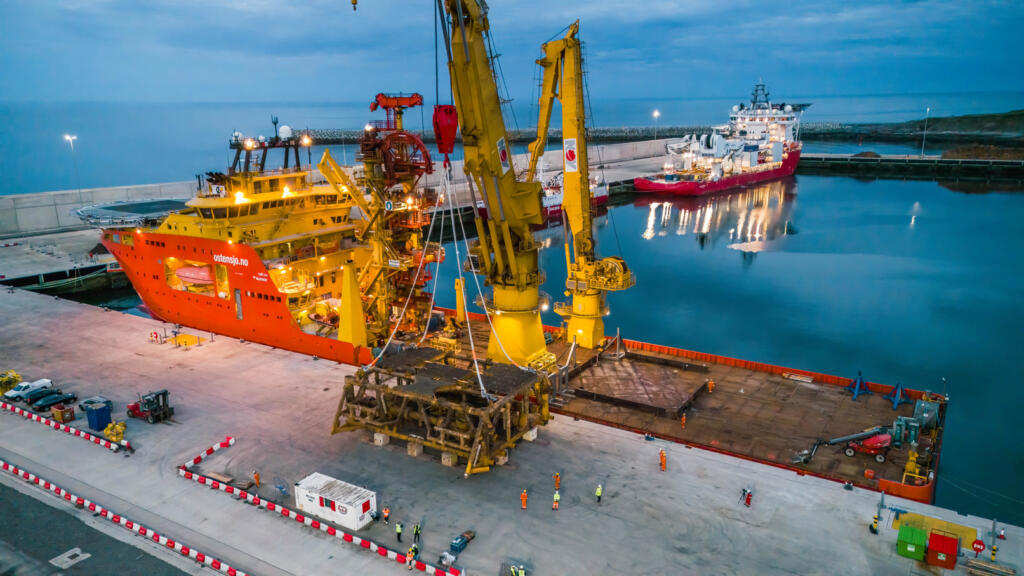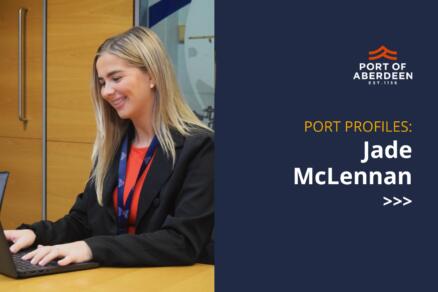
Safe, sustainable and streamlined decommissioning

Now one of the largest decommissioning facilities in Europe, Port of Aberdeen is well positioned to support growth in the decommissioning industry and create new opportunities for the local supply chain.
Earlier this year, the North Sea Transition Authority stated that UKCS operators are expected to spend about £24 billion on decommissioning between 2023 and 2032, up £3 billion on the forecast for the same period in last year’s report.
World class decommissioning facilities
Port of Aberdeen has a proven track record of supporting safe, cost-effective, and sustainable decommissioning services, from well plugging and abandonment to material reuse and recycling.
With its expanded infrastructure, covering North Harbour and South Harbour, there is more than 7,600 metres of quayside for vessels up to 300 meters in length, coupled with ultra heavy-lift capability up to 140 tonnes / square metre.
The port also holds a Waste Management Licence from the Scottish Environment Protection Agency for the provision of offshore decommissioning services. The port's decommissioning facilities feature an impermeable heavy duty concrete base and quarantined areas for hazardous waste including Naturally Occurring Radioactive Materials (NORM).
With an unmatched supply chain of energy engineering expertise and excellent connectivity via marine, road, rail, and air, the port's strategic location to the North Sea oil and gas fields minimises customer transit times and reduces operational costs, delivering a highly efficient service.

Port of choice
Port of Aberdeen was selected for supporting a major decommissioning project in July 2024. DeepOcean’s Edda Freya offshore supply vessel returned to Port of Aberdeen where a 440-tonne Subsea Isolation Valve (SSIV) was offloaded onto South Harbours Castlegate Quay. This was the North Sea’s largest SSIV and marked the completion of this decommissioning project.
With ample heavy lift quayside capacity and an additional 125,000sqm of project space at South Harbour, this multi-call project has brought in over 10,000 tonnes of subsea material.
Phoenix Decom also utilised the port’s ample laydown space for a landside decommissioning project for DOF Subsea. The project included the onshore receipt, offload, and safe preparation of approximately 10km of flexible flowlines and umbilicals from one of DOF Subsea’s decommissioning projects for a North Sea client prior to recycling.
The substantial quantity of flexible flowlines and umbilicals required significant quayside laydown space and had the potential for multi lifts and handling, which could increase the project’s risk, duration, and cost.
South Harbour's design enabled the project team to lay the extended lengths of flowlines and umbilicals along the quayside, allowing for in-situ processing and cutting operations. This approach proved to be highly efficient, consolidating multiple steps at a single location, thereby reducing asset movement and manual handling.
This operation was completed with zero HSE recordable incidents, and the offloading method adopted reduced the anticipated timeline by nearly one third.
Setting the standard
Port of Aberdeen continues to set the standard for decommissioning operations, reinforcing its position as a premier hub for the North Sea.
By combining world-class facilities, service quality, and a commitment to environmental stewardship, the port is not only meeting the challenges of decommissioning but also driving innovation and value for its partners.




